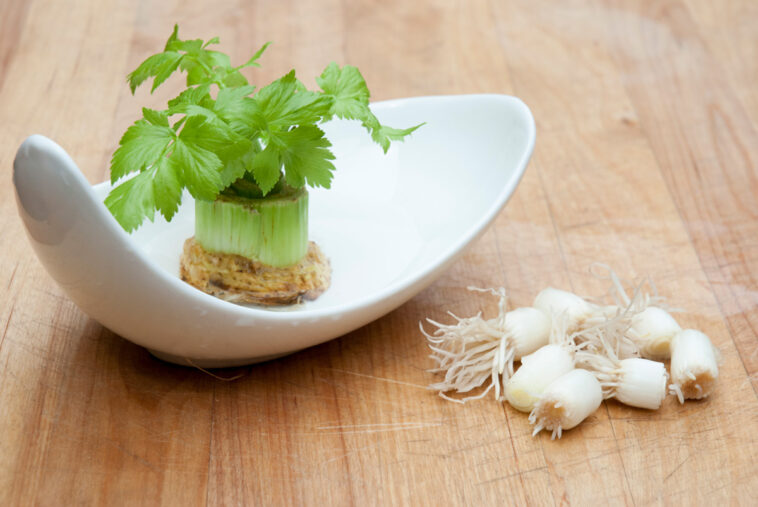Instead of throwing away your veggie scraps, use them to grow more right in your kitchen. Making the most of your produce is both eco-friendly and budget-friendly, and it will save you a trip to the grocery store. Here’s how to make an indoor garden.
This at-home repurposing is simple and doesn’t even require a garden – only water. Even better, you can re-grow multiple times using the same scraps. Here’s how to do it.
Leafy Greens
Veggies like lettuce, cabbage and celery vary in taste, but grow much the same way. Save the bottom one to two inches and place in a shallow bowl of water. Growth can start in as soon as three days and will lead to fresh, home-grown vegetables in no time. Use them for a variety of salads or make a dish like lettuce wraps, where the cabbage and celery can be used for toppings.
Leeks and Green Onion
The flavors of these vegetables are interchangeable but they are grown just the same. With leeks, simply cut two to three inches off the bottom and place it in a container of water. Similarly, take the bottom white portion of the green onion (with any roots still intact) and place it in a glass of water. Within a couple days, roots will begin to grow, leading to a new vegetable. Make a creamy pasta dish with leeks, peas and bacon with your finished product.
Lemongrass
When life gives you lemongrass, re-grow it! Cut a two- to three-inch piece of lemongrass and place it in a tall, skinny glass halfway full with water. It will sprout within a couple of days. Once it’s fully grown, lemongrass is a tasty addition to a variety of soups. Consider making including it in a ginger-carrot soup that can be served hot in the winter and cold in the summer.
The same technique can be used with fennel, celery and carrot greens. Additionally, herbs such as mint, rosemary, thyme, parsley and sage can get started in water but need to be moved to potting soil when roots begin to grow. The same goes for avocados, beets, mushrooms, potatoes and other produce items. Whether you keep this project in bowls inside the kitchen or you move it to a backyard garden, re-growing is free, easy, good for the environment and good for you.
Know Before You Grow!
1. Before you get started, choose the right container for your vegetable of choice. Slim veggies like green onions thrive in tall water glasses and a plump vegetable like cabbage grows best in a wide, shallow bowl.
2. A ton of water isn’t necessary. Only fill your container up halfway to prevent the produce from falling into the water as it grows and becoming moldy.
3. Check in every few days. These vegetables do the work on their own, but you will need to manage their growth and ensure they’re still intact. During your checks, pull off any discolored pieces and add more water if you need it.







Comments